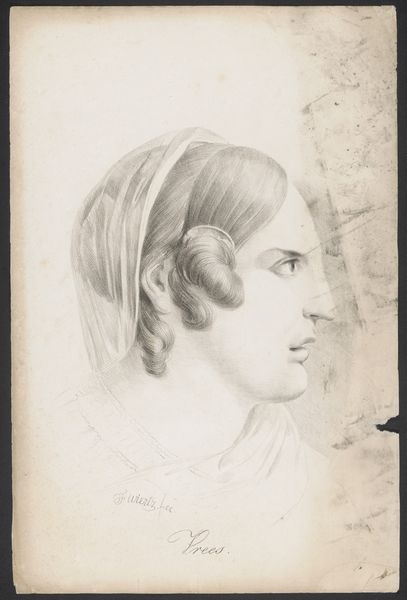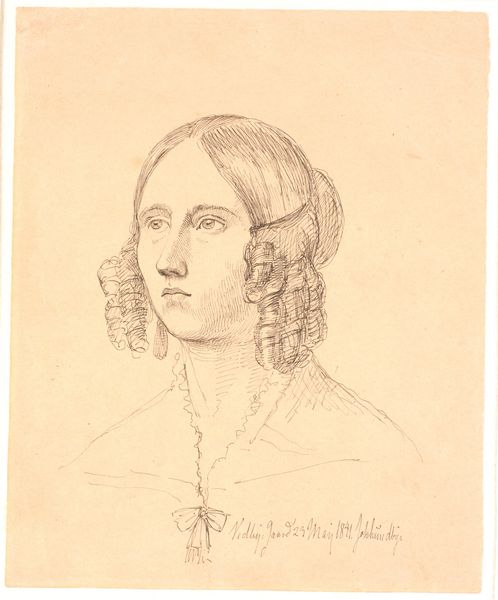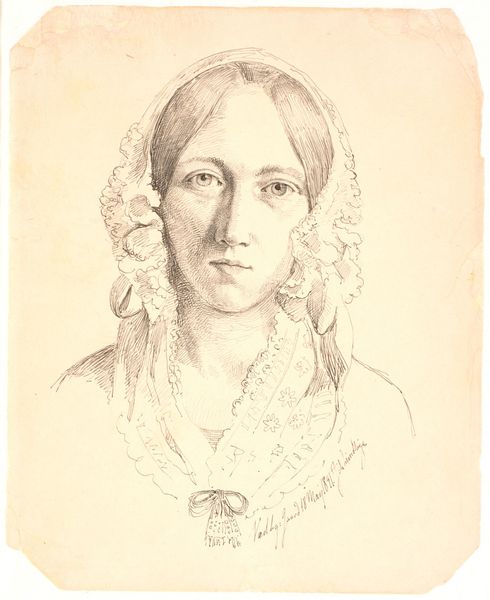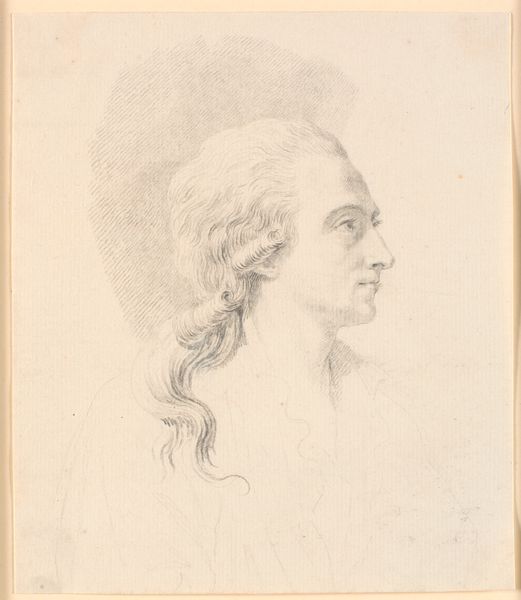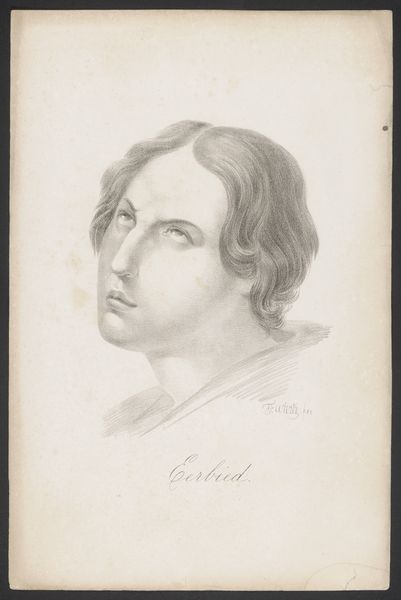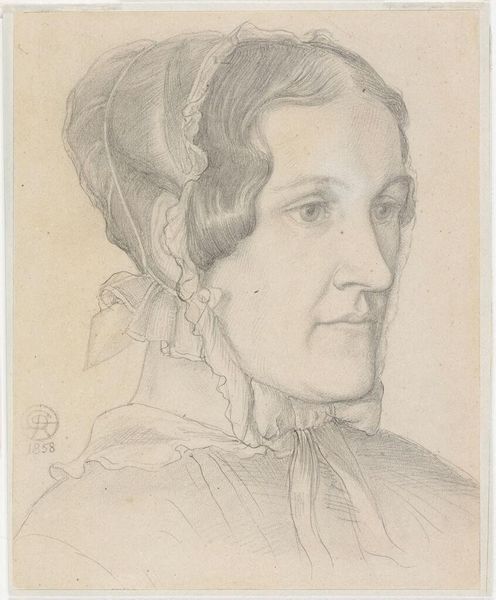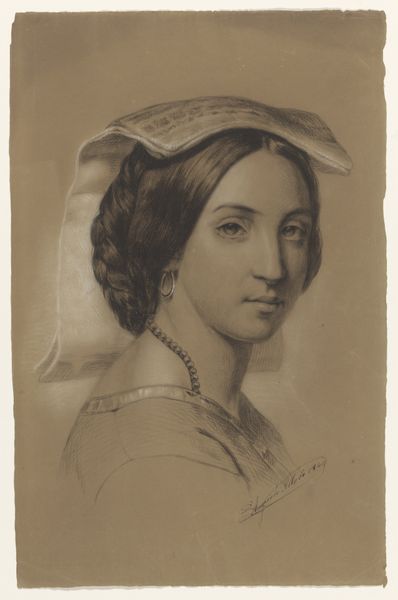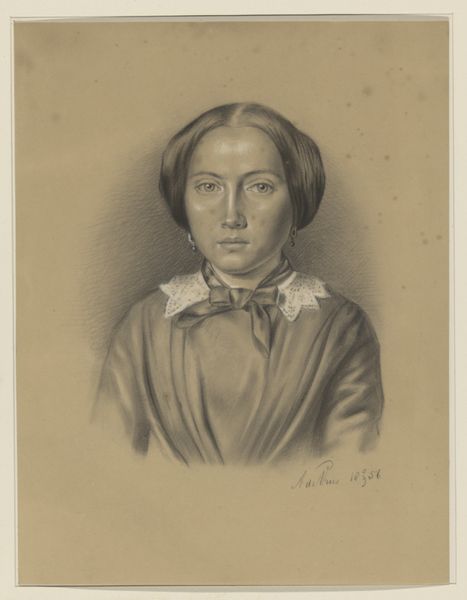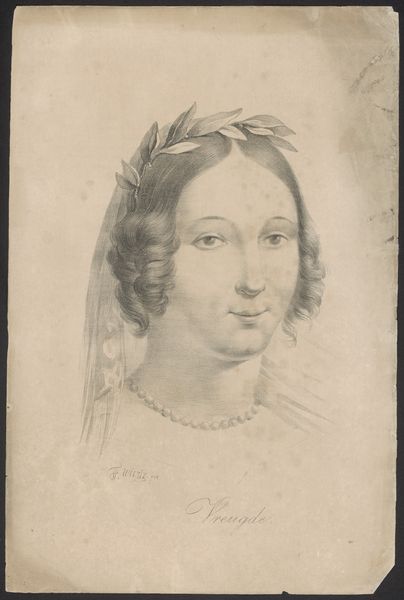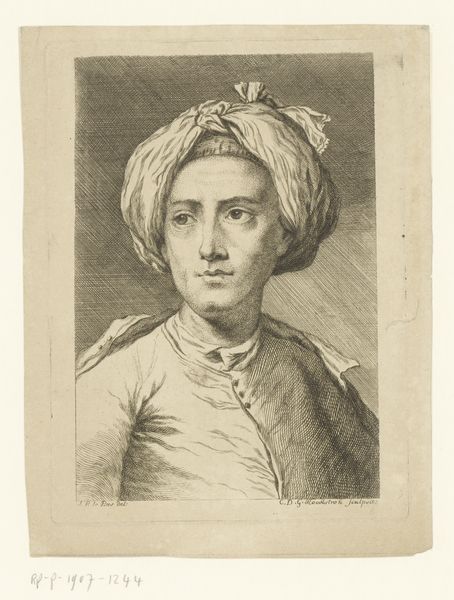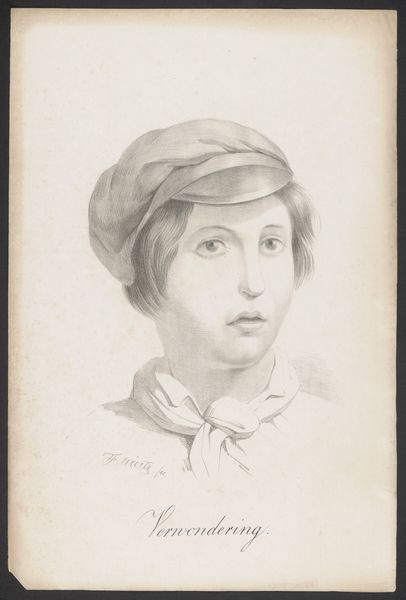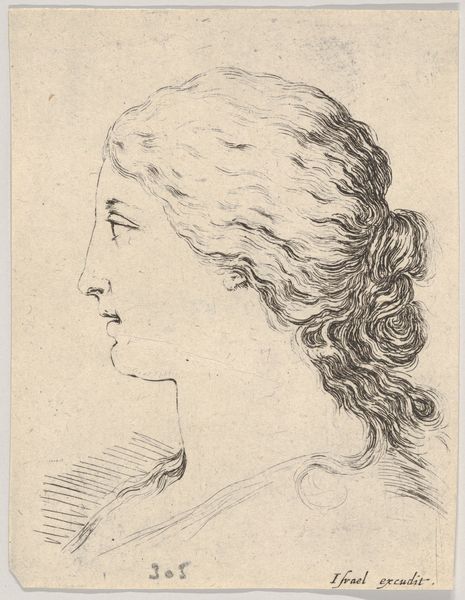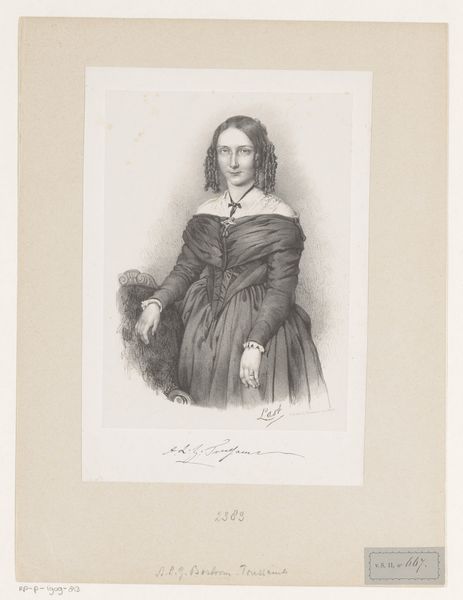
drawing, pencil
#
portrait
#
drawing
#
caricature
#
pencil drawing
#
romanticism
#
pencil
#
portrait drawing
#
realism
Dimensions: height 500 mm, width 330 mm
Copyright: Rijks Museum: Open Domain
Curator: Looking at "Portret van een vrouw en profil" from 1847 by Henricus Franciscus Wiertz, what strikes you first? Editor: The drawing itself, that precise rendering in pencil – look how Wiertz captured the texture of her hair, the fall of light on her skin. It is skillful. I see labor evident in the delicate strokes. Curator: Yes, the Romanticism apparent in its style is striking but consider that portraiture from this period was heavily tied to class. Who got their portraits drawn, and what did it signify about their status? Editor: Absolutely, commissioning portraits was a symbol of wealth and a claim to societal position. However, the materiality interests me – the specific quality of pencils and paper accessible at the time surely affected the creative output. The social conditions were definitely impacted by these materials. Curator: Exactly! Moreover, thinking about the sitter herself, her gender certainly played a significant role in dictating the pose, dress and general representation. In these portraits, women were presented a particular type of beauty standard—often, of course, viewed through the male gaze. Editor: It also reveals the labor divisions of the time. Wiertz, presumably male, is rendering this woman for patronage; a dynamic loaded with power and social expectations dictating her image is worthy to render. I wonder, what kind of workshop, tools and assistants did he need to produce this? It’s critical to see what went into producing the aesthetic experience. Curator: This piece, for me, highlights how art is so deeply embedded within the broader social fabric and the construction of identity through representation. Art of any medium is always shaped by ideology of that specific time. Editor: I appreciate seeing that process made visible in the strokes of the pencil, that constant engagement with materiality in society, even on paper. It shapes and tells a parallel narrative of a drawing—revealing how everything comes from material, production and society. Curator: And those social contexts frame how we can continue to interpret and deconstruct it today! Editor: I agree—seeing and re-seeing. Always.
Comments
No comments
Be the first to comment and join the conversation on the ultimate creative platform.
